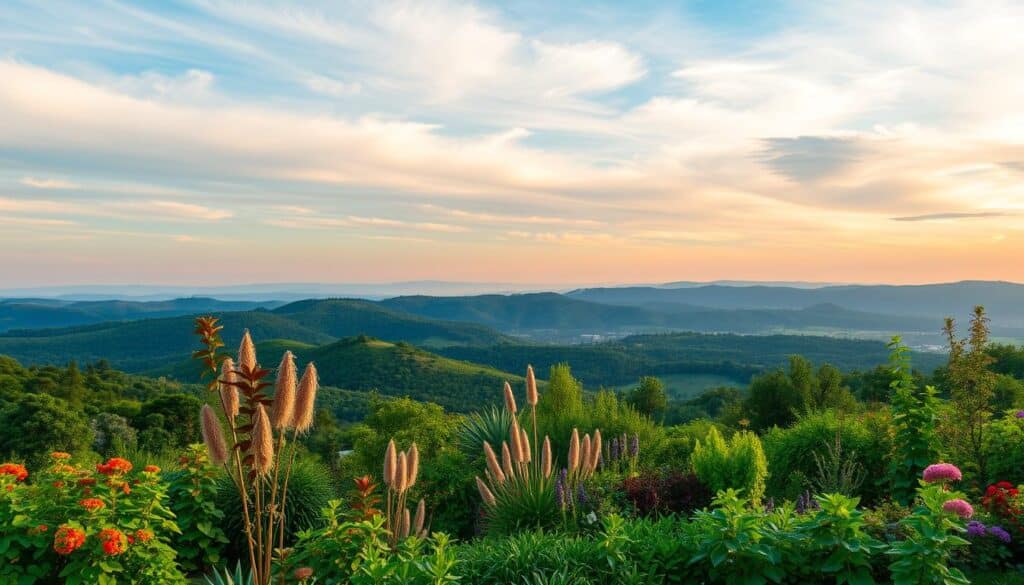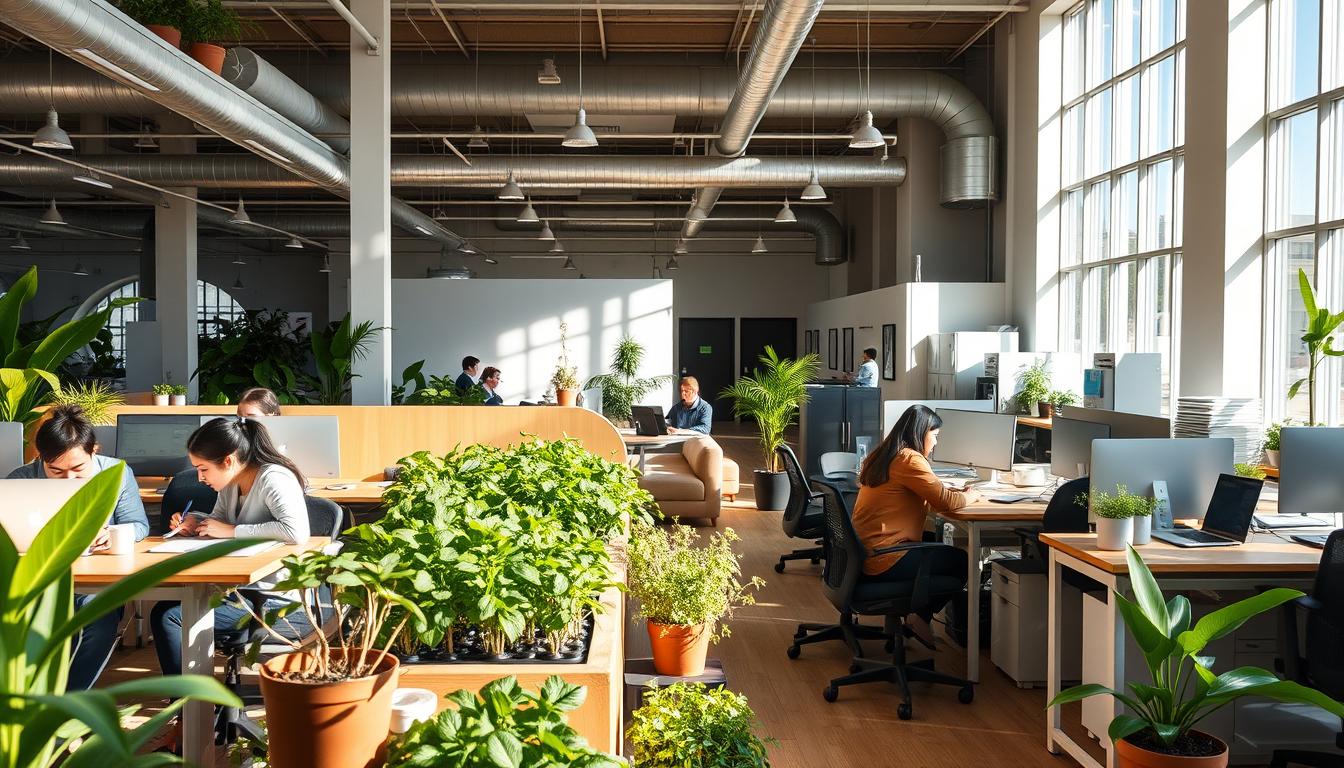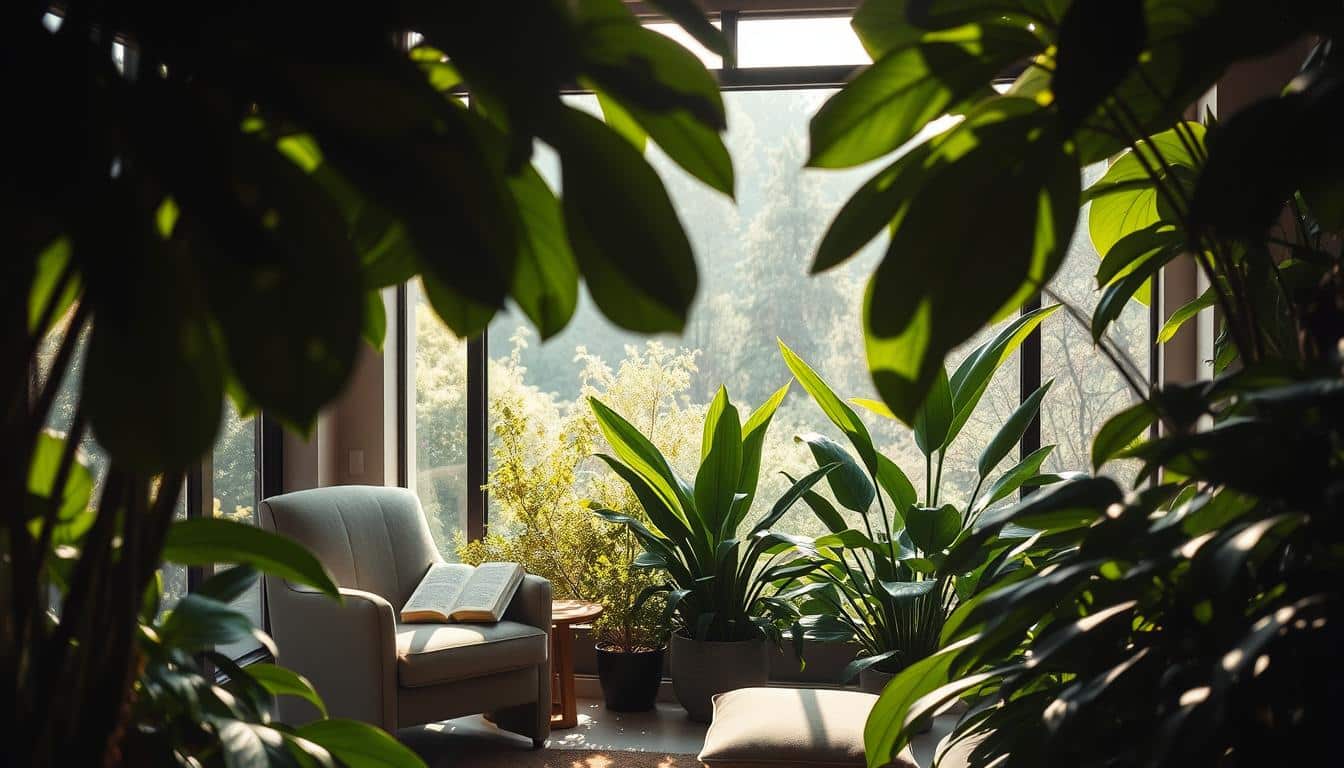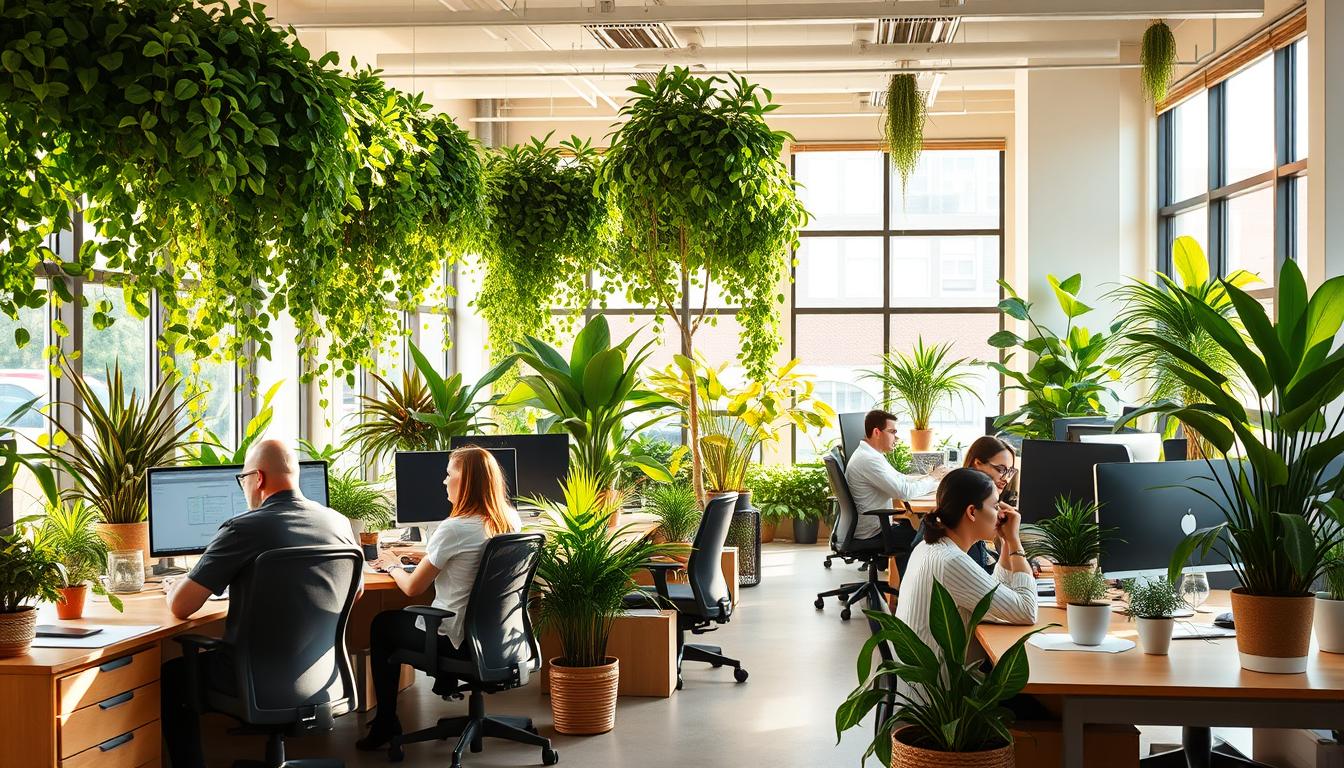Understanding how plants affect climate zones is key for gardeners. It helps pick the right plants for your area. We look at temperature, seasonal changes, and rain.
These details help plants grow better all year. Knowing how these elements mix in your garden leads to a thriving green space.
Understanding Climate Zones in Gardening
Knowing about climate zones helps gardeners grow plants successfully. Each zone tells us where certain plants do best. By learning about these zones, gardeners can pick plants that are more likely to survive and do well.
The Importance of Climate Zones
Climate zones guide us in choosing the right plants for an area’s weather. They show the expected temperature and moisture levels. This knowledge helps avoid plant loss and leads to thriving gardens.
How Climate Zones Affect Plant Growth
Different climates affect how plants grow. Things like temperature changes, humidity, and sunlight matter. Knowing these factors helps gardeners adjust their methods. Creating smaller microclimates can boost plant growth, leading to lush gardens.

What Garden Climate Zones Tell You
Understanding garden climate zones helps you succeed in gardening. These zones classify areas by their temperature and weather, showing which plants do well in each location. Learning the basics of garden climate zones helps gardeners choose plants wisely. This reduces plant diseases and boosts plant health.
The Basics of Garden Climate Zones
The climate zone system mainly uses temperature to help gardeners. Each zone shows the expected low and high temperatures for the year. Knowing this helps pick plants that will survive winter and thrive in summer. It’s important for planning your garden and picking the right plants.
Temperature Patterns and Growing Seasons
Temperature patterns shape growing seasons in different zones. Knowing these patterns helps gardeners plan when to plant and harvest. Season changes impact how well plants do, so understanding your local weather is key. Things to know include:
- Average frost dates
- Length of the growing season
- Impact of microclimates
By learning about these factors, you can make your garden thrive. It uses your area’s specific weather patterns. This knowledge leads to better plant choice and care throughout the year.
USDA Hardiness Zones Explained
The USDA Hardiness Zone Map is a key tool for gardeners in North America. It splits the region into 13 zones by average annual low winter temperatures. This helps you pick plants that will do well in your climate. Each zone has a 10°F temperature difference. The zones are based on 30 years of weather data, including frost impact and elevation.
How USDA Zones are Determined
USDA hardiness zones come from studying winter plant survival. They look at average low temperatures. These zones guide you in choosing plants right for your climate. Knowing these temperature ranges helps your garden thrive in winter.
Using the USDA Zone Map Effectively
To use the USDA zone map well, find your zone to pick the right plants. Knowing your USDA zone leads to better gardens. Online tools let you find your zone with your zip code. This shows climate differences in your area. Yet, local soil and microclimates also affect plant growth.
Plant-Influenced Climate Zoning: Selecting the Right Plants
Successful gardening relies a lot on choosing the right plants. It is key to know how well they’ll do in your hardiness zone. Learning about your zone’s weather helps make your garden strong and beautiful. By understanding local weather and using the right gardening techniques, you can keep your plants healthy and your garden looking great.
Choosing Plants Based on Hardiness Zones
It’s important to check if plants will do well in your area’s climate. Make a list of plants that grow well in your zone. Think about their growth needs, how much water they need, and what kind of soil they like.
- Growth habits
- Water requirements
- Soil preferences
This makes taking care of your garden easier and makes it look better. Picking plants native to your area or those that are used to similar climates cuts down on work and adds to your garden’s beauty.
Understanding Microclimates
Microclimates are small areas with their own climate, different from the larger area. They can be affected by the landscape, buildings, or plants that are already there. Understanding and using these microclimates lets you:
- Grow plants that usually wouldn’t do well in your region
- Make smarter use of sunlight and shade
- Offer better protection from strong winds
For example, placing plants near south-facing walls can give them extra warmth. This helps sensitive plants grow better and makes your garden more interesting.
Beyond USDA: Other Climate Classification Systems
There are more ways to classify climate than just the USDA Hardiness Zones. The Sunset climate zones are also really helpful, especially for those who garden in the western US. They take into account things like how much rain we get, how humid it is, and how high up we are. This makes understanding climate more detailed.
The Sunset Climate Zone System
In the west, gardeners find the Sunset climate zone system really useful. It’s different from USDA zones because it looks at things like how much rain falls in each season and the tiny climate areas we call microclimates. This helps pick the right plants that will do well in our specific conditions, making our gardens better.
Comparing International Zone Systems
Countries all over the world have their own climate classification systems for gardening. Some examples are:
- Australia’s BAM zones, which pay attention to local weather patterns.
- The UK’s modified hardiness zones, taking into account the effects of the sea on plant growth.
- Canada’s own Plant Hardiness Zones, designed for its varied climates.
These systems from different countries show the many ways climates can be categorized for gardening. By understanding these, gardeners can tailor their planting strategies to suit the unique challenges of their local environment.
Finding Your Garden Climate Zone
Knowing your garden’s climate zone helps pick the right plants. With the right tools, gardeners can find their zone. This helps plant growth succeed.
Using Online Zone Finders
Online zone finders are key for gardeners today. The USDA’s interactive map gives zone info by zip code. These tools show climate zones, weather history, and climate change effects. All this info helps gardeners plan and choose plants.
Local Resources for Accurate Zone Identification
Local gardening help like agricultural extension offices is great for finding your zone. They consider your area’s specific features and weather history. Talking with local experts adds to what you learn online. It deepens your gardening knowledge.
Local Factors That Affect Your Microclimate
Understanding local factors is key for city gardening success. Urban heat islands, elevation changes, and soil types all impact plant growth.
Urban Heat Islands and Their Impact
Urban areas get hotter than rural ones by 2-5°F because of concrete and asphalt. This affects which plants can grow well in cities. It’s important to pick plants that can handle the heat. Knowing about urban heat islands helps us garden better, ensuring plants not only survive but thrive.
Elevation and Soil Composition Effects
Changes in elevation make different microclimates, even in small places. Low areas may get frosty, while high spots face more wind and rough weather. Soil type greatly affects gardening too. Dark soils that drain well warm up fast, good for quick plant growth. But, clay soils hold water differently, which can impact roots. Knowing these details helps in planning city gardens for better plant health and more yield.
Extending Your Growing Season
Gardening fans always look for ways to get more from their gardens. They try new methods to grow plants longer than usual. This means they can start planting earlier and enjoy the fruits of their labor for more time.
Techniques to Push Boundaries in Your Zone
There are several ways gardeners can make their growing season longer:
- Using cold frames or hoop houses for a warmer area.
- Putting mulch down to keep soil temperatures steady and roots safe.
- Planning successive plantings to keep veggies coming all season long.
Season Extenders: Tools and Methods
Many tools exist to help gardeners expand their season:
- Row covers to guard against cold nights.
- Plant protectors, like a wall-o-water, to keep seedlings warm.
- Heated mats for better seed starting.
- Growing in containers to easily move plants when it’s very cold or very hot.
Using these tools, gardeners can experiment with new plants. Even those not usually suited to their area. This makes gardening even more exciting.
Conclusion
Understanding how plants are influenced by their zone is key to good gardening. This guide shows how important local climate is when choosing plants. It makes sure your garden is healthy and lasts a long time.
Knowing your climate zone helps you pick the right plants. It’s all about matching your garden to your area’s weather and soil.
Gardening is more than just following rules. It’s about learning from doing and adapting to your garden’s needs. With this info on how zones affect plants, you’re ready to create a garden that does well all year.



